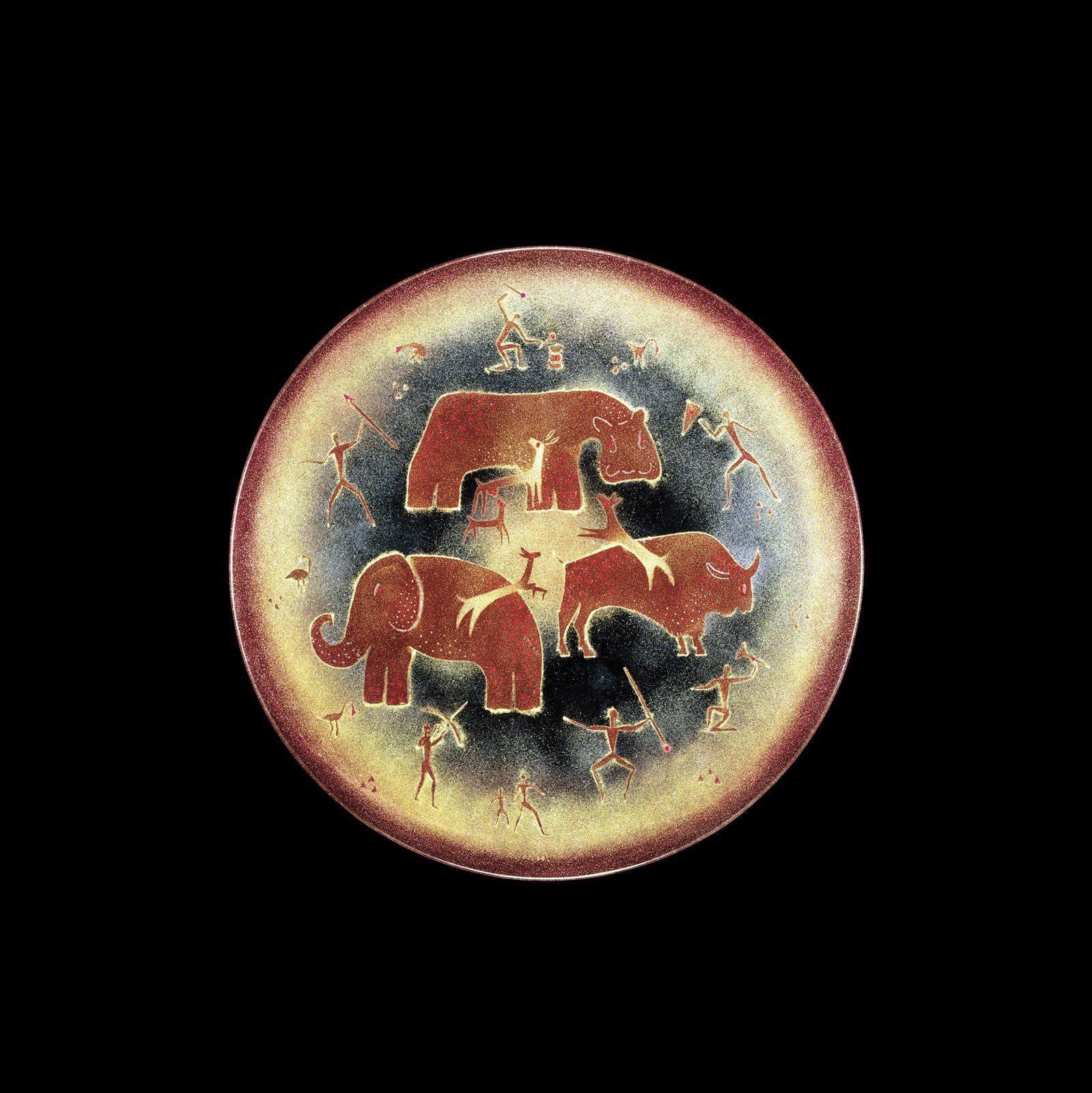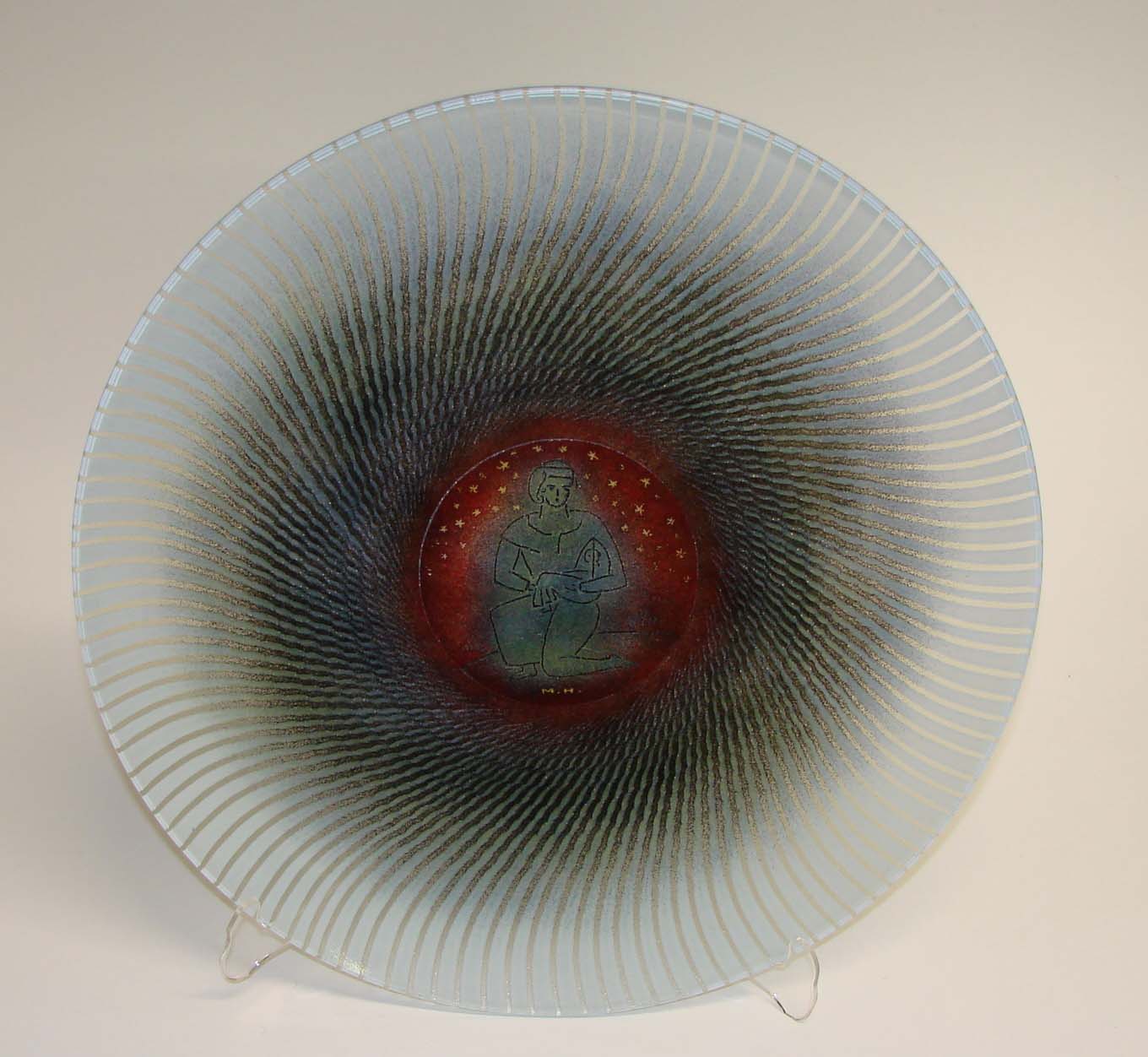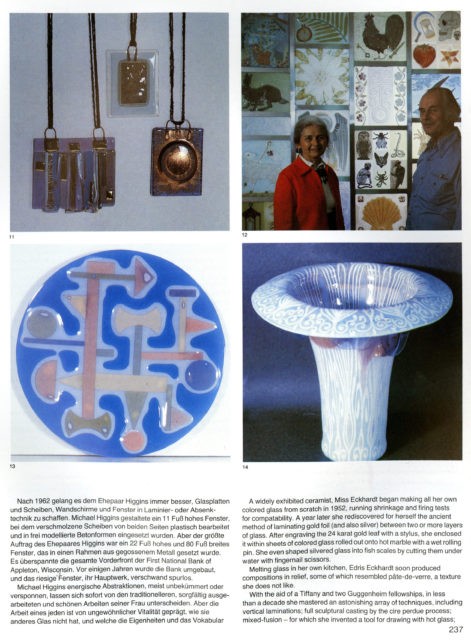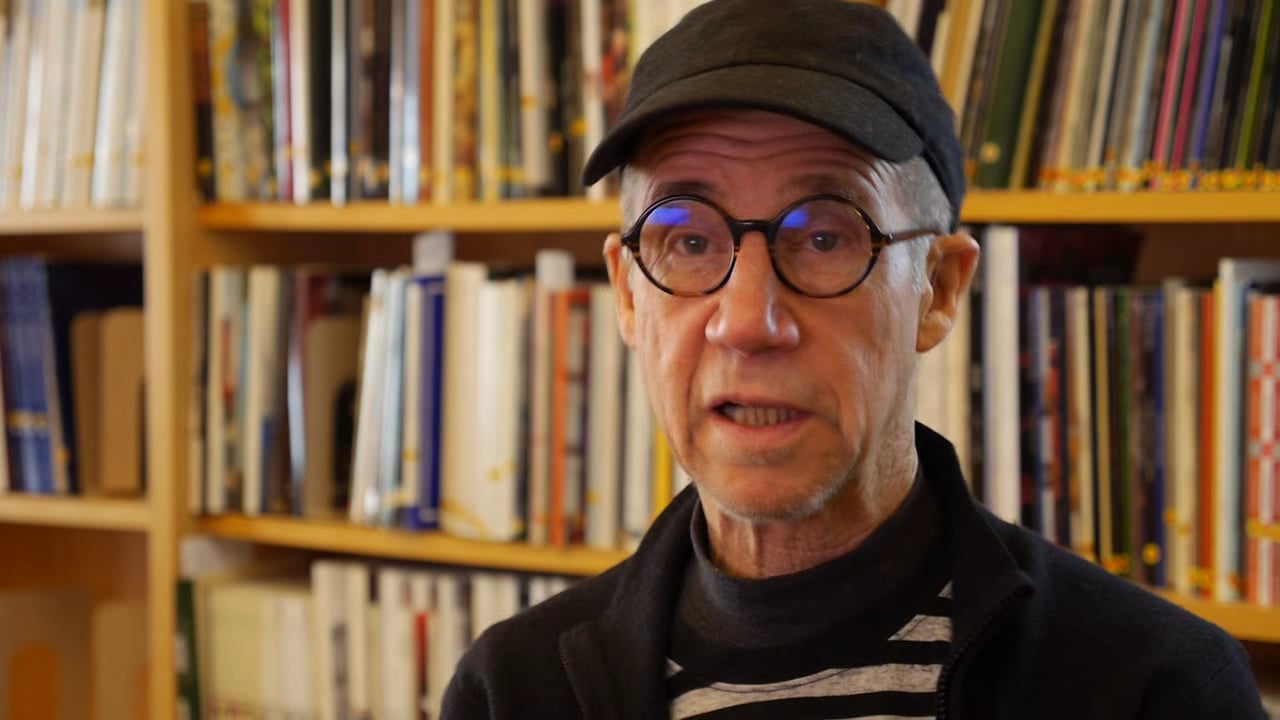Maurice Heaton discusses his enameling on glass technique in a 1984 interview with Paul Hollister. Interview with Maurice Heaton by Paul Hollister, April 28, 1984. (Rakow title: Frances Higgins, Edris Eckhardt, Maurice Heaton interview [sound recording] / with Paul Hollister, BIB ID: 168560) Clip length: 03:46.
Time stamp: 00:00
Clip 1: Maurice Heaton talks about color techniques in his work. Clip length: 01:13.
Maurice Heaton (MH): No, its black enamel. Before you put the black enamel on you put red. Now you see, I did this one and I used to make them with some of the white that was clear here, and I decided to do it all black. Now, this one here has black and not quite enough red. You see the quality of the red in here is better. See how beautiful it is?
Paul Hollister (PH): Yes, wonderful, yeah.
MH: Now, I know—
PH: Glows.
MH: —a gray in here is put on—you have to be very, very careful as to how you sprinkle the gray on. When it gets too dark it’s no good. And then after you cover the whole thing with white.
PH: Oh.
MH: And then, you see, the piece becomes whiter. In other words you make this transparent—
PH: But you first—
MH: [inaudible] with gray, and then put white all over it.
PH: You put a little gray? I thought that was just the difference in the depth of the sandblasting or whatever.
MH: There’s no sandblasting.
PH: No sandblasting?
MH: No, it’s all done by sifting the enamel.
Time stamp: 01:15
Clip 2: Maurice Heaton discusses his coated enamel technique. Clip length: 01:14.
Paul Hollister (PH): So what gives—what gives this ridge? What gives this sunken—
Maurice Heaton (MH): Because—
PH: These are sunken and these are ridged.
MH: Well, the enamel is black in here—has thickness—
PH: I see.
MH: This has no thickness—
PH: I see.
MH: —except a little bit for the white.
PH: Oh. So it’s not sandblasted at all [inaudible]—
MH: There’s no sandblasting.
PH: —and then enameled over.
MH: Only one operation on it.
PH: Which is enameling with several different coats.
MH: —[inaudible] different coats.
PH: Yeah, and you sprinkle a little gray—
MH: —Sprinkle a little gray in here, and after you—
PH: You have to do that in reverse, of course. It’s like painting on the back of glass.
MH: The wonderful part is this: when I do this and these and so on, I have a mirror here, and two pieces of wire here, and when I put my design here, it is like this, I can see it in the mirror as it will be when it’s [inaudible] over.
PH: Aha, that’s right, because you get the reverse.
MH: Yeah, so I get the reverse.
PH: You get it in reverse, which is really positive.
MH: Yeah.
Time stamp: 02:33
Clip 3: Maurice Heaton talks about using float glass. Clip length: 01:13.
Paul Hollister (PH): This one also has a rainbow sheen to it on the—looking here it must be the lighting or something.
Maurice Heaton (MH): Well—
PH: Was that intentional?
MH: [inaudible]
PH: That rainbow? Is it just my eyesight?
MH: Sort of a brutish thing, yeah. Sometimes, you know, they make the glass now, the window glass is made—
PH: Yes.
MH: —and they call it float glass.
PH: Mm-hm.
MH: Now, what I have to do is to test each piece and keep it with a label on, and I decorate it so that the float glass is under the—float glass that comes in contact with a [inaudible] is underneath. If I put it on top then it has, sometimes, a sheen like this, and sometimes it’s rather obnoxious.
PH: Well I don’t think it’s obnoxious, it’s lovely. Can’t you see that one in there, that bowl?
MH: Oh, I know. It becomes almost—
PH: Rainbow.
MH: —yeah, and it looks very nice on white. Now when you have the rainbow on this, then it becomes rather obnoxious.
PH: Mm-hmm. Well, I can see that.
Permalink



